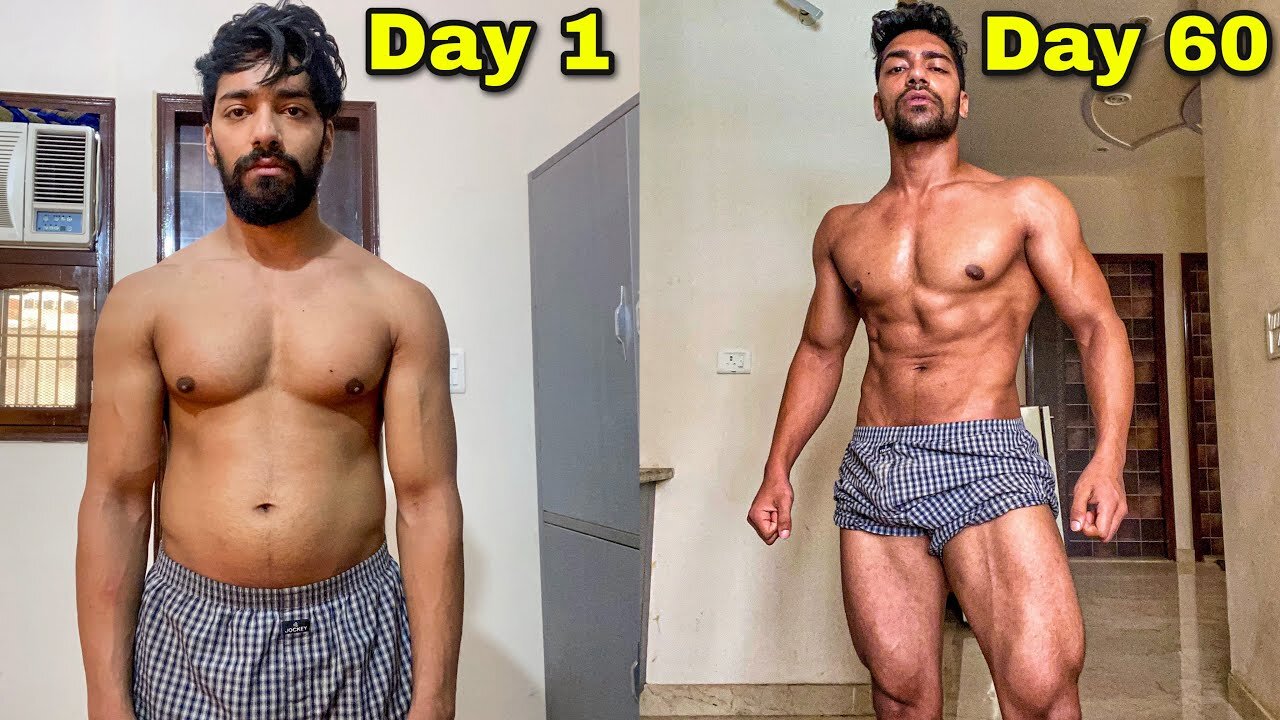Premium Only Content

60 Days Natural Body Transformation | Bodybuilding Motivation
Why Physical Exercise is Vital for a Healthy Brain and Body.
Physical fitness through exercise is one of the most common pieces of advice offered by medics across the planet. There are many benefits of exercising when done correctly. Some of the most common include improved blood flow, general body fitness, weight loss, and stress relief. This video seeks to focus on some of the direct benefits of physical exercise to the brain and the body.
1 Boost The Memory
Studies conducted on the hippocampus among children, adults and the elderly showed that the brain structure grew after aerobic exercise. The hippocampus is the part of the brain that holds the memory, and therefore crucial for learning abilities.
2 Improve Concentration
Exercise improves the ability to focus on one task, ignore distractions, and also hold and manipulate information. Aerobic exercises improve retention among students, and therefore crucial for children, adults and even the elderly. As well
3 Improve Mental Health
Physical exercise is a great mood enhancer. The feeling of elation experienced after exercise is real and should be used as an alternative stress reliever. A 2010 study conducted for eight weeks showed a significant decrease in the amygdala after yoga and meditation. The amygdala is the part of the brain that is implicated in processing stress, fear and anxiety.
4 Slowing Cognitive Decline
Physical exercise delays the onset of mental wear and tear, and dementia, especially among the elderly. It pays to exercise early in life to avoid mental illnesses that come with old age. A study published on Neurology suggested that women who were physically fit in their middle ages were 88% less likely to develop dementia than their peers who were only moderately fit.
5 Physical Fitness and Weight Loss
A study published in the Indian Journal of Endocrinology and Metabolism showed that an active exercise training program was ideal for reducing weight and improving physical fitness among obese children. The effects were possible even without a change in dietary composition.
6 Protection of the Body against Age-related Decline
According to a study published in the Journal of Aging Research suggests that physical activity maintained throughout life is accompanied with a lower risk of developing chronic conditions such as cancer, diabetes, cardiovascular and coronary heart diseases associated with chronological ageing.
7 Improved Heart and Lung Health
When done on a regular basis, physical activity, both moderate and intense, lowers the risk of developing coronary heart disease. Regular exercise strengthens the heart muscles and their ability to pump blood to the lungs and the rest of the body. The lungs automatically pick up the pace to keep up with the exercise and, therefore, become stronger.
8 Increases Lean Mass and Strength
High-frequency training and low-frequency training both contribute to improvements in lean mass and strength in men and women. Strength training also helps alterations in metabolism, increase in bone density, reduces the risk of injury, and even rebuilds lost muscle. The buildup of muscle is necessary for preventing a resting metabolic rate that causes obesity.
9 Improved Cholesterol Levels
Regular physical activity and exercise are effective in lowering cholesterol levels in the blood and thus prevent the onset of coronary heart disease, heart attacks and strokes. Clinicians can recommend aerobic training, or resistance training to ensure that healthy cholesterol levels are achieved.
10 Prevention and Management of Diabetes
Regular exercise can help delay or prevent the development of type 2 diabetes by 60%. Daily physical activity, aerobic exercise, or resistance training prevents sugar-build up in the blood. Insulin sensitivity increases and the body can take up glucose during and after activity. Any form of physical activity that helps the body burn calories, e.g. walking, cleaning, mowing the lawn is beneficial and should be included in daily routines.
-
 LIVE
LIVE
Mally_Mouse
3 hours agoLet's Play!! - Mario Party Jamboree
417 watching -

Nerdrotic
7 hours ago $37.32 earnedWoke Hollywood TERRIFIED! GLICKED: Gladiator 2 & Wicked REVIEW | Friday Night Tights 329 w/ Metatron
128K37 -
 LIVE
LIVE
SoundBoardLord
3 hours agoFriday Night Fever!!
308 watching -
 56:36
56:36
Sarah Westall
5 hours agoTesla Files and Trumps Uncle, UFO Files, the Electric Universe & Suppressed Science
25.5K15 -
 55:10
55:10
LFA TV
19 hours agoRINOs Are Trump’s Biggest Enemy Now | Trumpet Daily 11.22.24 7PM EST
29.8K14 -
 7:01:18
7:01:18
ttvglamourx
8 hours ago $2.68 earnedClick Right Here !DISCORD
20K -
 LIVE
LIVE
RaikenNight
8 hours ago $3.13 earnedPlaying Halo with the Boyz!!!!
151 watching -
 1:03:05
1:03:05
Exploring With Nug
11 hours ago $1.45 earnedA Mother's Fight for Justice: The Unanswered Questions About Her Son's Death
15.8K1 -
 53:31
53:31
The Amber May Show
5 hours ago $3.48 earnedTruth Behind Russia's Nuclear Threat | Matt Gaetz Steps Down As A.G.
22.2K -
 LIVE
LIVE
Adamsgotgame
9 hours agoAim training 357hrs #GZW and more
204 watching